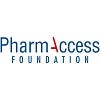How to stop the silent tsunami of antibiotic resistance
Antibiotics are one of the most powerful drugs to fight life-threatening diseases. But if these stop working, few treatment options remain. The WHO calls for global response against resistance and mandated this week as World Antimicrobial Awareness Week (WAAW).
Although all eyes are on COVID-19, global antimicrobial resistance (AMR) is one of this century’s major public health challenges, risking many more deaths than today’s pandemic. If no action is taken — warns the UN Ad hoc Interagency Coordinating Group on Antimicrobial Resistance — drug-resistant diseases could cause 10 million deaths each year by 2050.
Resistance to antibiotics is a complex problem rooted in poor healthcare practices as well as in mismanaged agriculture, where antibiotics are used to treat bacteria in animals. Through inadequate diagnosis and treatment processes, overuse and misuse, germs can adapt and no longer respond to the antibiotics designed to eliminate them. When these organisms multiply entire populations can become resistant.
To get a better understanding of the problem and how PharmAccess contributes to the fight against resistance, we speak with Prof. Simon Kariuki, Senior Principal Research Scientist at the Kenya Medical Research Institute/Centre for Global Health Research (KEMRI/CGHR) and Head of the Malaria branch of KEMRI-Kisumu, Kenya. Over the years PharmAccess has collaborated with Prof. Kariuki and his team including increasing efficient malaria treatment using the Connected Diagnostics (ConnDx) digital approach developed by PharmAccess. Today we continue our work with KEMRI on a unique COVID-19 project.
Although AMR is a global problem, it manifests differently in different parts of the world. Can you tell us something about antibiotic resistance in sub-Saharan Africa?
‘’AMR is a huge problem in this region. More and more people die of diseases that were easily treated in the past. About 70% of drugs used in the 1980s is useless today, including our main antimalarials. You see many people taking antibiotics way too often or for the wrong reasons. Or they receive substandard drugs, meaning they fail to fully eliminate the germ causing the disease. Another factor causing AMR is the limited capacity at health centers to properly diagnose. Doctors may prescribe antibiotics based on a presumed cause only. And it is not just from the perspective of the doctor or pharmacy — also the medication-taking behavior of patients is problematic. With no insurance and little money at hand, people often choose to ‘self-treat’ through the nearest local drugs shop and simply hope the fever disappears by taking whatever drugs that are available to them’’.
What are the types of resistance you find in areas like Kisumu in Kenya?
‘’We find drug-resistant cases across all common diseases including malaria, TB, HIV, cystic fibrosis, neglected tropical diseases, cholera, and typhoid fever. Many are treated with massive amounts of antibiotics. Sadly, these diseases particularly affect the poor living in rural areas.’’
PharmAccess piloted a phone-based intervention in Kisumu called Connected Diagnostics (ConnDx) in which the diagnosis for malaria is digitally interpreted and uploaded to the cloud by a rapid diagnostic test reader. The result of the test triggers a ‘treatment entitlement’ for the patient, but only when the test is positive. With over 11,500 tests conducted through ConnDX, an over-prescription rate of 40% was identified, quantifying a serious problem while identifying patients, locations and health facilities that are at risk of AMR.
What is the potential of the ConnDx’s model?
‘’ConnDx can prevent the development of resistance to malaria as only patients who are tested positive will qualify for treatment. It also allows to actually track and trace the disease, as test results are uploaded with GPS coordinates and in real-time in the cloud and connected to the patient’s mobile health wallet (M-TIBA). Currently, we rely on tedious and slow paperwork or registration of an occasional upsurge of antimalarials to predict an outbreak. But without adequate and timely diagnosis, you simply don’t know what is going on, when and where. Governments need to plan the distribution of drugs and also prevention tools like bednets, repellents, to hotspots, target populations and health centers. For this, they require reliable, real-time data.
Avoiding over-prescription with ConnDx can lead to huge savings, especially when it becomes available for a wider range of conditions. And importantly, it will help to improve the quality of a patient’s treatment, since it enforces the use of digitalized National Guidelines. Even when a malaria result is negative, the doctor will get directions to find out what else could be the cause of your fever, encouraging a better overall diagnosis process. When instead, you would be sent away with some pills and they don’t work, you lose trust in the medical system. Next time, you might look for another solution’’.
For more information on ConnDx, visit our website.
